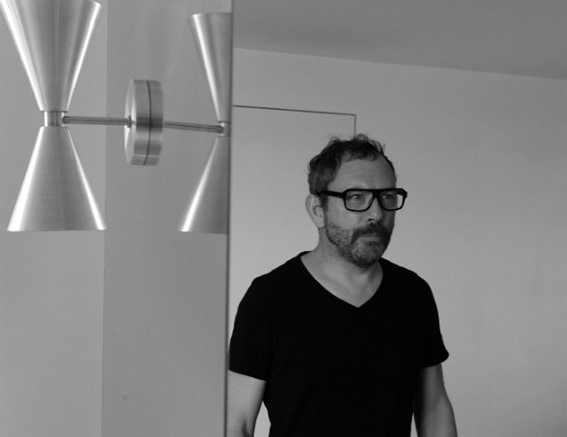
Liam Gillick
Liam Gillick is a British artist considered one of the most important figures in international contemporary art.
Biography of Liam Gillick
Liam Gillick was born in 1964 in Aylesbury, Buckinghamshire, England. From 1983 to 1984, he studied at Hertfordshire College of Art. In 1987, he graduated from Goldsmiths College, University of London, with a BA (Hons) degree in Fine Arts.
In 1989, he presented his inaugural solo gallery exhibition, titled "84 Diagrams," through art dealer Karsten Schubert in London.
In the early 1990s, Gillick was a member of the band Soho. In 1991, he co-founded G-W Press, a limited editions and publishing company, alongside art collector and co-publisher of Art Monthly, Jack Wendler. The company specialized in producing limited editions by renowned artists such as Jeremy Deller and Anya Gallaccio.
He was a member of a loose group of visual artists known as the Young British Artists or YBAs. Moreover, Liam Gillick, along with Damien Hirst, Sarah Lucas, Angela Bulloch, and Henry Bond, was considered "the earliest of the YBAs."
In 2002, Gillick was commissioned to create artworks for various elements of the newly completed Home Office building at Marsham Street, London. His works adorned the canopy, the glass facade, the kiosks, the entrance icon, and the vitrines, adding a touch of artistic brilliance to the premises of this government department.
In 2002, Gillick received a nomination for the prestigious British Turner Prize. Then, in 2008, he made it to the shortlist for the Vincent Award of the Stedelijk Museum Amsterdam. Notably, in 2009, the artist represented Germany in the Giardini Pavilions at the Venice Biennale.
Liam Gillick's Art Style
Liam Gillick is a versatile artist who explores diverse forms such as sculpture and installation. Beyond his artistic endeavors, he is also a theorist, curator, and educator. His expansive body of work includes published essays, texts, lectures, and collaborative projects, all of which inform and are informed by his art practice. Gillick's artistic inquiries center around the conditions of production, particularly in a post-industrial landscape. Ongoing preoccupations revolve around questions of economy, labor, and social organization, shedding light on the complexities of these themes.
His most prominent recognition comes from his production of sculptural objects, including platforms, screens, models, benches, prototypes, signage, and structural supports. These pieces are crafted using sleek modular Plexiglas and aluminum forms, showcasing standardized colors from the RAL system. Drawing upon elements of engineering, industrial design, and the legacy of hard-edged minimalism, these abstract quasi-architectural forms serve as a powerful critique of neo-liberal or corporate aesthetics, the prevalence of automation, and the endless cycle of (re)development.
With a focus on secondary or incomplete forms, such as screens and platforms, Gillick identifies structures that possess the potential to destabilize the power of architecture and challenge the architecture of power. Through these elements, he creates generative spaces that foster discussions and the development of ideas.
Years:
Born in 1964
Country:
United Kingdom, Aylesbury, Buckinghamshire
Personal website